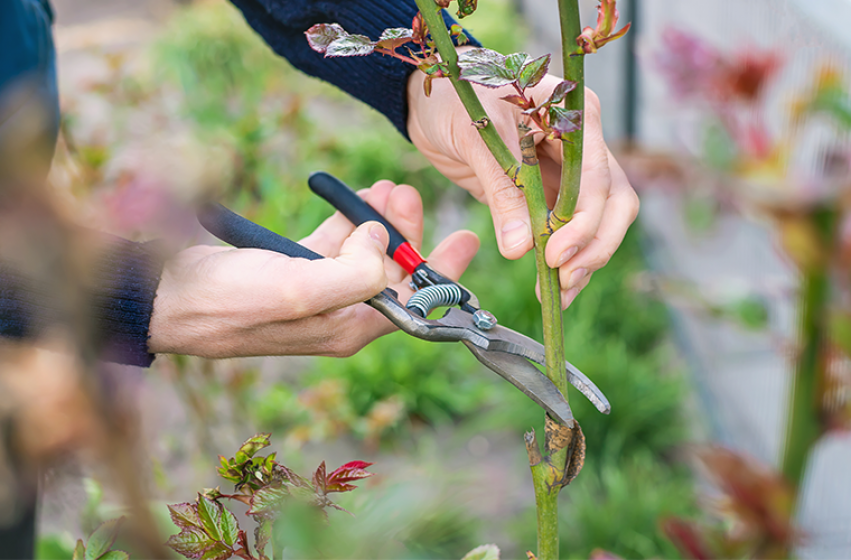Most people think that pruning is a job for the summer and fall seasons. While it is best to prune certain types of trees and shrubs during the warmer months, winter is the optimum pruning time for many deciduous trees and shrubs- when plants are still dormant and a few weeks before buds start swelling and sap starts flowing again.
BENEFITS OF WINTER PRUNING
Other than reducing plant size and maintaining the shape or appearance of the tree or shrub, pruning removes dead and diseased growth and thins out interior branching allowing for better air circulation, which helps to reduce the possibility of disease. Winter pruning also provides plants with extra root and energy reserves to ensure quick-healing wounds and support robust spring growth that will help to camouflage pruning cuts. And, in winter, it’s easier to see the plant structure, since there are no leaves to get in the way. When done right, dormant pruning encourages trees to flourish in the spring by priming them for fast, healthy regrowth. To learn more about the benefits of winter pruning click here.
WHEN TO PRUNE IN WINTER
It is always best to prune in late January – early March, approximately 4-6 weeks before the spring warmth begins but after the severe cold passes. There are exceptions, like removing dead, damaged, or diseased stems throughout the year, or removing suckers in late summer.
PRUNING TIPS
Understanding the natural "habit" or shape of trees and shrubs will help you determine how to prune them. Follow these basic pruning tips for success:
- Upright suckers that appear at the trunk base or along lower branches can twist the tree out of shape, so be sure to trim these away.
- If a branch is inconveniently low, trim it off now, instead of waiting.
- Remove branches that grow in too tight of a “V” shape with the trunk, keeping branches that grow at horizontal angles.
- Trim back stems that compete with the main stem.
- Shorten limbs that stick out too far and spoil the proportion or symmetry.
- On an older tree, clear away overgrowth and deadwood, and remove branches that bow inward.
- Remove unsightly stubs when pruning. Cut close to the source of the branch or trunk without cutting flush to the trunk. The best pruning cut is at a 45-to-60-degree angle.
- Feed the plant when you prune to help stimulate root growth and healthy top growth.
PRUNING ESSENTIALS
We suggest the following tools for proper and efficient pruning:
- Hand Pruning Shears: use on branches up to 3/4-inch diameter.
- Lopping Shears: use on thicknesses 3/4 to 1 1/4 inches or branches out of reach with hand shears.
- Crescent Pruning Saw: use for heavier work.
- Hedge Clippers: use for shaping and shearing shrubs and hedges.
- Pole Pruners: use to cut out-of-reach branches up to 2-inches in diameter.
TIP: Always clean your tools after use. We suggest using rubbing alcohol to be effective against many diseases.
For a comprehensive list of pruning and gardening tools and accessories click here.
Join Garden Guru, Mike Westphal, on Wednesday, January 27, 2021 • 11AM, as he offers expert advice and tips on the proper techniques and tools for pruning to ensure your skills are as sharp as your shears. Highlights include how to correctly prune crepe myrtles, along with other popular trees, shrubs, and perennials. TO VIEW LIVE FEED, GO TO MCDONALD GARDEN CENTER'S MAIN FACEBOOK PAGE here.
For further information on pruning click here.
You can find many helpful gardening, including pruning publications through Virginia Cooperative Extension at click here.
